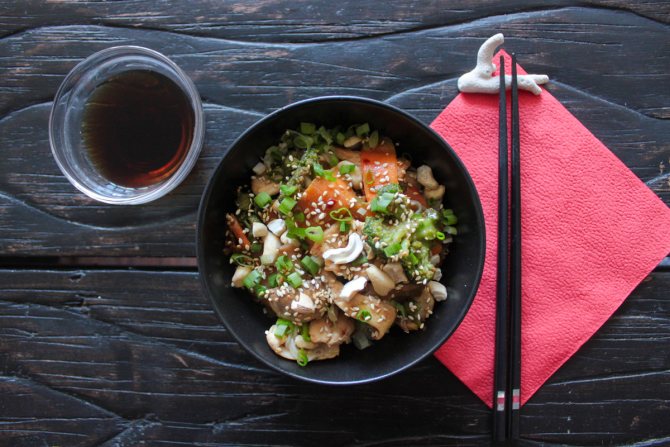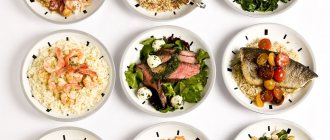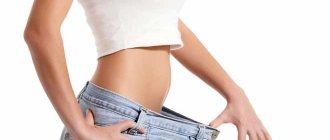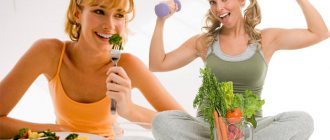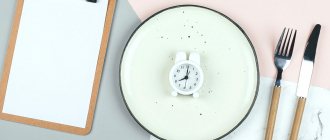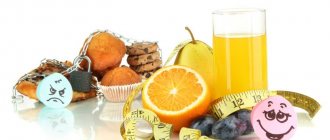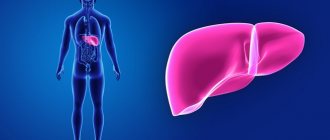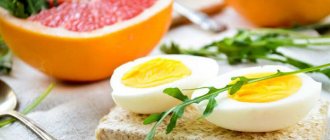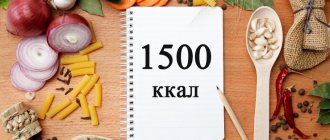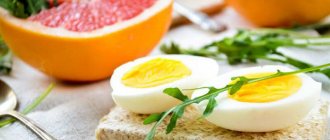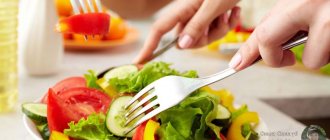To lose weight, many people who are losing weight count calories. In this article you will learn an approximate menu for 1500 kilocalories per day.
Many people gain weight during the winter season, and as a result, it’s difficult to put on your favorite tight jeans in the spring. You have to try all sorts of weight loss methods in order to return to your previous parameters.
Nowadays there are many diets known that allow you to get your volume in order; one of the effective ones is a moderate calorie intake per day. More precisely, a person should not exceed the consumption of 1500 kilocalories per day. Thanks to this, you will lose body weight and the feeling of hunger will not depress you.
General information
A 1500 calorie diet is the most suitable option for normalizing nutrition. This diet is perfect for a short girl who wants to reduce her body fat percentage. In this case, the diet does not affect muscle elements, muscle mass is preserved.
Content:
- General information
- What is the secret to losing weight?
- Diet per day: sample menu for one day
- Sample menu for the second day
- General recommendations
- Popular Misconceptions
- Efficiency of weight loss
- Examples of dishes
- Unencumbered days
Why 1500 kcal?
If a person is sedentary and does not play sports, then he spends no more than 1,700 calories per day. It may seem that 1500 calories is not enough. But if you plan your diet correctly, you can not only eat a varied diet, but also tighten your figure without harming your body.
This amount of calories will allow you to avoid overeating and starving.
Helpful information
How to remove a double chin and cheeks: practical tips
Black Fire is a very effective program from Bob Harper
An effective program for young mothers HOT BODY healthy mommy from Jillian Michaels
The best diet during pregnancy: rules and menu
What is the secret to losing weight?
On average, to stay in shape, the average lady should consume at least 1800 kcal. By reducing food consumption by 20%, weight will gradually decrease without harming your health.
But experts insist that prolonged diet restriction can be harmful to health. Everything has a limit. In order for the weight loss process to be as safe and comfortable as possible, it is not recommended to spend fasting days in a row; it is important to take breaks between them. The best option is two unloads within seven days.
During attacks of severe hunger, the first thing you need to do is drink one glass of clean, still water, and only after about twenty minutes start eating food. The daily norm of water is eight glasses. Water will help the body quickly cleanse itself of toxins and waste.
Such a menu for one and a half thousand allows you to eat deliciously, and, most importantly, eat right. A person will never experience hunger, because it is specially created by nutritionists and has all the ingredients. Anyone who is losing weight will be able to continue to lead an active lifestyle. One thousand five hundred calories cannot completely saturate the body with the required amount of minerals, vitamins and elements. Therefore, in order to prevent vitamin deficiency, it is recommended to additionally consume vitamin and mineral complexes in short courses.
Reviews from those who have lost weight
This diet gives good results.
The extra pounds go away slowly, but the weight remains even after the end of the diet, as evidenced by reviews. Sergey, 39 years old, Yekaterinburg: “I followed a diet for 15 days and trained regularly. Sometimes it was difficult, because I had to give up sweets and flour, but later my body got used to it. Thanks to the correction of the diet, the body has become more prominent, and this makes me happy.”
Larina, 25 years old, Moscow: “It all started as a diet, but later I didn’t want to go back to my previous diet. And now I’m trying to eat less and cook healthy meals. I feel great, the menu is suitable not only for losing weight, but also for getting healthy.”
In order to enhance the effect of correcting your diet, you should remain physically active: exercise, morning jogging, training in the gym.
Diet per day: sample menu for one day
The menu involves limiting the consumption of fats and carbohydrates in equal proportions. It excludes some elements that cause an increase in the energy value of food. Only strict adherence to all recommendations in the recipe will allow you to consume no more than 1500 kcal. On the first day you need to switch to the desired diet. For maximum effectiveness before the diet, it is important to properly prepare the body with a cleansing enema.
For 1500 kcal per day you can approximately eat:
- first breakfast: carrot and apple juice – 150 ml, millet porridge with the addition of pumpkin pieces – 100 grams, dessert cottage cheese with the addition of various grains – 125 g, tea with cinnamon, but without sugar – 200 ml;
- A similar amount of food will give you a boost of energy for the whole day with a calorie content of 343 kcal.
Second breakfast may include:
| Banana | 1 PC |
| Milkshake with black currant | 200 ml |
| Milk cottage cheese with berries | 100 g |
| Rusk | 10 g |
| Total | 195 kcal |
For lunch you can use:
- asparagus cream soup with croutons – 250 grams;
- goulash with beef and green beans – 250 grams;
- beet caviar – 100 ml;
- compote – 200 ml;
- in general, the value of such a menu is about 330 kcal.
The afternoon snack includes: prunes – 75 g, tea with thyme – 200 ml. The total calorie content of such a meal is 208 kcal.
Be sure to have dinner 4 hours before bedtime. Suitable: stuffed peppers – 200 grams, sliced vegetables – 150 grams, green tea with honey – 200 ml. As a result, the calorie content of dinner will be 303 kcal.
An hour before bedtime, you can allow yourself kefir with 1% fat content - about 200 ml.
The total calorie content of the diet will be 1457 kcal.
With such a diet per day, reviews from those losing weight are only positive.
Allowed and prohibited foods of the 1200 calorie diet
During the diet, you can include the following foods and dishes in the menu:
- Bread made from bran, rye flour or wholemeal wheat flour.
- Low-fat veal and rabbit meat, beef, chicken and turkey. It is allowed to prepare dishes from lean parts of lamb and pork. Portions should be small.
- You can prepare porridge from buckwheat, pearl barley and barley.
- Skinny varieties of fish and seafood are allowed on the menu.
- Do not limit the consumption of low-fat kefir and cottage cheese. You can afford hard cheese less often.
- Chicken eggs are eaten as an omelet or boiled.
- The basis of the diet is fresh vegetables and herbs.
- It is good to use fresh unsweetened fruits and berries as snacks. They are used to make compotes and prepare fresh juices. Nuts are also eaten for this purpose.
- Vegetable oil is used only for salad dressing.
- It is best to drink green tea. Herbal teas, unsweetened coffee, mineral but still water are allowed.
There are some foods that you should completely avoid eating:
- Sugar and its analogues.
- Spicy foods, fried and fatty foods.
- Any fatty meat.
- Fried egg yolk.
- Fatty fish and seafood.
- All canned goods.
- Pasta and products made from premium quality wheat flour.
- Fatty foods and milk-based drinks.
- Cheese with high salt and fat content.
- Ready store-bought sauces.
- Vegetables in marinade, saltiness.
- Any confectionery products.
- Alcohol.
- Juices, cocoa, nectars prepared in industrial conditions.
- Cooking fat, animal fat.
Products that need to be partially limited on the menu:
- Spicy spices, salt.
- Beans and potatoes.
- Berries, fruits and dried fruits with a high sugar content (grapes, figs, bananas, raisins, etc.).
- Semolina, rice, oatmeal.
- Sweets containing natural sugar, such as honey or jelly.
The number of kilocalories in foods that should be abandoned or partially limited:
| Product | Number of kilocalories per 100 g |
| Cereals in the form of porridge | |
| Buckwheat | 137 |
| Yachka in flakes | 354 |
| Millet cereal | 92 |
| Oatmeal | 93 |
| Barley porridge | 84 |
| Oatmeal flakes | 358 |
| Rice | 79 |
| Pearl barley | 102 |
| Oils | |
| Olive oil | 898 |
| Butter | 747 |
| Sunflower seed oil | 899 |
| Milk based products | |
| Curd mass | 344 |
| Yogurt 1.5% fat | 65 |
| Dutch cheese | 352 |
| Yogurt 3.2% fat | 87 |
| Kefir 2.5% fat | 51 |
| Milk 0% fat | 30 |
| Ryazhenka fat content 2.5% | 53 |
| Cream 10% fat | 121 |
| Cream 20% fat | 209 |
| Sour cream 10% fat | 118 |
| Sour cream fat content 20% | 208 |
| Curdled milk | 57 |
| Russian cheese | 366 |
| Fat cottage cheese | 236 |
| Suluguni | 293 |
| Low-fat cottage cheese | 89 |
| Milk 2.5% fat | 53 |
| Meat products | |
| Lamb meat | 201 |
| Duck | 348 |
| Sheep kidneys | 78 |
| Chicken | 161 |
| Sheep liver | 102 |
| Turkey | 192 |
| Ram's heart | 85 |
| Veal | 91 |
| Pork kidneys | 84 |
| Beef | 191 |
| Pork tongue | 203 |
| Beef brains | 126 |
| Pork heart | 87 |
| Beef liver | 100 |
| Fatty part of pork | 484 |
| horsemeat | 149 |
| Pig liver | 105 |
| Beef kidneys | 67 |
| Low-fat part of the pig | 318 |
| Beef udder | 176 |
| Beef heart | 89 |
| Rabbit meat | 197 |
| Beef tongue | 160 |
| Vegetables | |
| Cauliflower | 30 |
| Sorrel | 29 |
| Green peas | 75 |
| Swede | 38 |
| Zucchini | 30 |
| Beans | 59 |
| Boiled potatoes | 80 |
| Spinach | 22 |
| Onion greens | 21 |
| Garlic | 103 |
| Leek | 38 |
| Horseradish | 70 |
| Eggplant | 22 |
| Onion | 41 |
| Beans | 36 |
| Carrot | 29 |
| Tomatoes | 19 |
| cucumbers | 15 |
| Beet | 46 |
| Olives | 111 |
| Salad | 15 |
| Bulgarian pepper | 25 |
| Turnip | 27 |
| Parsley | 45 |
| Radish | 33 |
| Radish | 22 |
| Dried fruits and nuts | |
| Peanut | 555 |
| Dried apples | 275 |
| Walnuts | 662 |
| Prunes | 262 |
| Raisins with pits/quiche-mish variety | 273/285 |
| Hazelnut | 701 |
| Cashew | 647 |
| Pistachios | 555 |
| Dates | 277 |
| Dried apricots | 270 |
| Dried apricot | 279 |
| Sunflower seeds | 582 |
| Almond | 643 |
| Fish, caviar, seafood | |
| Sturgeon/chum salmon/pollock caviar | 201/250/127 |
| Carp | 95 |
| Gobies | 147 |
| Squid | 77 |
| Pink salmon | 151 |
| Flounder | 86 |
| Smelt | 93 |
| crucian carp | 84 |
| Chum salmon | 138 |
| Rudd | 106 |
| Sprat | 142 |
| Ice fish | 76 |
| Shrimp | 85 |
| Bream | 109 |
| Mackerel | 11 |
| Salmon | 200 |
| Pollock | 67 |
| capelin | 159 |
| Navaga | 78 |
| Boiled mussels | 53 |
| Sea bass/river | 123/80 |
| Burbot | 85 |
| Octopus | 74 |
| Sturgeon | 161 |
| Halibut | 106 |
| Roach | 108 |
| Saira | 257 |
| Carp | 119 |
| Salaka | 124 |
| Whitefish | 141 |
| Salmon | 222 |
| Mackerel | 158 |
| Herring | 248 |
| Horse mackerel | 119 |
| Som | 141 |
| Zander | 81 |
| Sterlet | 126 |
| Tuna | 95 |
| Cod | 76 |
| Sea eel | 331 |
| coal fish | 153 |
| Trout | 99 |
| Oysters | 91 |
| Hake | 84 |
| Sole | 89 |
| Pike | 83 |
| Berries and fruits | |
| Cherry plum | 35 |
| Apricots | 44 |
| Quince | 37 |
| Orange | 38 |
| A pineapple | 49 |
| Cowberry | 42 |
| Bananas | 87 |
| Cherry | 46 |
| Grape | 73 |
| Grapefruit | 37 |
| Pomegranate | 53 |
| Blueberry | 35 |
| Pear | 41 |
| Blackberry | 31 |
| Melon | 34 |
| Strawberries | 40 |
| Kiwi | 46 |
| Figs | 57 |
| Cranberry | 27 |
| Dogwood | 42 |
| Lemon | 30 |
| Gooseberry | 43 |
| Mandarin | 39 |
| Raspberries | 43 |
| Cloudberry | 33 |
| Mango | 69 |
| Peaches | 42 |
| Rowan | 57 |
| Sea buckthorn | 31 |
| Plum | 41 |
| Pomelo | 29 |
| Currant | 39 |
| Persimmon | 61 |
| Blueberry | 41 |
| Cherries | 54 |
| Apples | 48 |
| Flour and bakery products | |
| Wheat flour | 324 |
| Sliced loaf | 261 |
| Drying | 335 |
| Rye flour bread | 210 |
| Pita | 239 |
| Rye flour | 321 |
| White bread | 246 |
| Wheat crackers | 327 |
| Egg | |
| Chicken eggs | 153 |
| Omelette | 181 |
| Non-alcoholic drinks | |
| Apricot juice | 39 |
| Coffee with milk | 56 |
| Apple juice | 42 |
| Pineapple juice | 48 |
| Tea | 0 |
| Orange juice | 36 |
| Peach juice | 37 |
| Pomegranate juice | 58 |
| Lemon juice | 18 |
| Bread kvass | 26 |
| Alcohol | |
| Dry wine | 66 |
| Semi-dry wine | 78 |
| Dessert wine | 175 |
Sample menu for the second day
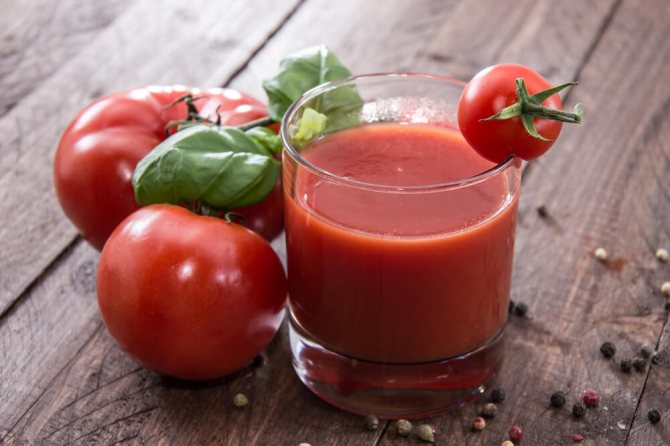
The new diet for the second day consists of various fruits and vegetables. Tentatively may include:
First breakfast – tomato juice – 150 ml, pilaf with squid – 200 grams, sliced vegetables – 70 grams, coffee or cappuccino – 200 ml. The total meal has 310 calories.
Second breakfast – kiwi – 2 pieces, low-fat yogurt – 125 ml. Total – 156 kcal.
For lunch you can choose: puree soup - 250 ml, minced turkey roll - 150 grams, vinaigrette with seaweed - 100/5, compote - 200 ml. Total calorie content - 585 kcal.
Afternoon snack: banana – 1 piece, yogurt with cereals – 125 ml. Total – 218 kcal.
Dinner includes: low-fat cottage cheese, salad with fresh vegetables, green tea with mint.
Calorie content will be 164 kcal.
Popular Misconceptions
To lose weight you need to reduce your caloric intake. But this statement only works within reasonable limits. Complete refusal to eat can only worsen the condition and increase swelling of the body. The body is not so easy to deceive.
Minimizing calories puts the body into strict economy mode. At the same time, its waste will be insignificant - weight loss will stop, since all products will be intensively converted into fats.
As a result, a daily menu that is compiled incorrectly only increases weight. And calorie content has no effect on this. A hunger strike literally dries out the body, ridding it of essential water and muscle elements.
What to avoid when eating properly
When losing weight, you need to give up junk food first.
Experts also recommend limiting the amount of salt (but not eliminating it altogether). This will help remove excess fluid from the body. Do not overuse hot spices. They accelerate metabolism, but at the same time irritate the mucous membranes of the digestive tract, causing a feeling of hunger.
Carbonated drinks and alcohol are also prohibited - they cause swelling, create additional stress on the kidneys, and weaken the body.
Efficiency of weight loss
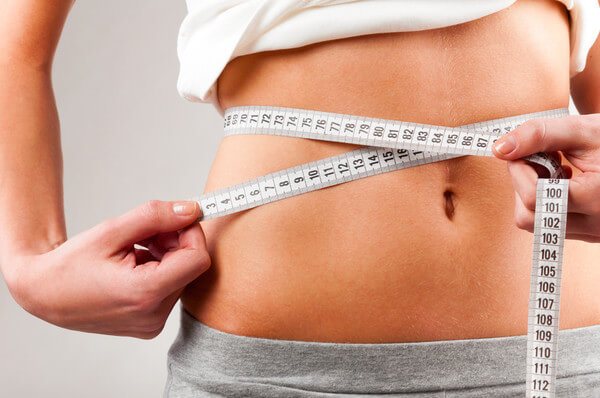
To successfully lose weight, you need to comprehensively prepare your body. An important rule is that the daily caloric intake should not be less than the minimum expenditure on physiological needs. On average, we are talking about daily 1300-1800 kcal. For these reasons, a 1500 kcal diet is today the most optimal and safe way to cleanse the body of excess “fat”. The reviews and results of this diet are only positive.
"Fat Friends"
Fat cells are your body's reserve, which it uses in difficult times. They protect our internal organs from temperature, physical and other external influences. In addition, fat cells make your figure unique, giving it a unique silhouette.
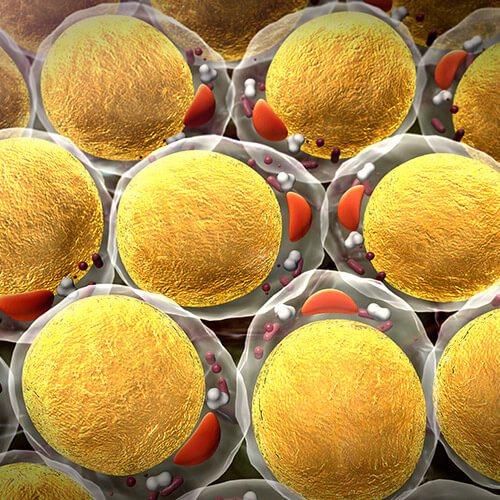
Unfortunately, they have one unpleasant feature: they can increase in size, sometimes exceeding their original size by 100 times. The reason for this behavior of fat cells is poor nutrition: abuse of fatty foods. You won’t face such a sad outcome if you try a diet of 1,500 kcal per day. You will feel the difference after the first day: your physical condition will be vigorous and healthy, your skin will begin to glow, and swelling and redness will become less noticeable.
Regardless of whether we lose weight or gain weight, the number of fat cells remains constant, only the size and mass of fat inside the cell changes.
Examples of dishes
For a dietary breakfast on the menu day, it is better to choose something grain or fermented milk. This allows you to get a boost of energy, as well as useful and necessary probiotics. For example, you can cook:
Cottage cheese salad with buckwheat
Soak the buckwheat overnight in cool water. In the morning, add low-fat cottage cheese and any vegetables to it. Season with lemon juice and olive oil to taste. You can stir and sprinkle parsley, cilantro and dill on top. If desired, add a little salt.
Dinner
Soup is the main dish of this meal, the basis of a healthy diet. A great solution is meatball soup.
Preparation:
For meatballs, mix minced meat, eggs, bread. Cut potatoes and turnips into strips, cook vegetables for 15 minutes, add meatballs to the soup. Cook for another 10 minutes and leave for about 15-20 minutes. When serving, sprinkle with finely chopped herbs.
Dinner may not have any fresh ideas. It is quite possible to finish the food from lunch. For taste, add lettuce leaves with vegetable oil, tomatoes and vinegar.
Dinner
You can still treat yourself to carbohydrates for lunch. Useful, of course. Today we have stir-fry on rice - brown, unpolished or black - with meat and vegetables. Convenient for those who take food to the office - everything useful that you need for lunch fits into one container.
Stir-fry
| Number of servings: | 3 |
| Serving weight: | 300 g |
| Calorie content per serving: | 400 kcal |
Ingredients
| chicken breast | ½ pcs. |
| rice noodles | 2 bunches (150 g) |
| mushrooms | 200 g |
| carrot | 1 medium (100-120 g) |
| frozen broccoli florets | 8-10 pcs. |
| cashew | 40 g |
| green onions | 3 pcs. |
| toasted sesame | a handful of |
| ginger | 10-15 g |
| garlic | 4 cloves |
| olive oil | 4 tbsp. l. |
| Sesame oil | 2 tbsp. l. |
| soy sauce | 4 tbsp. l. |
| spices (salt, pepper, chili) | taste |
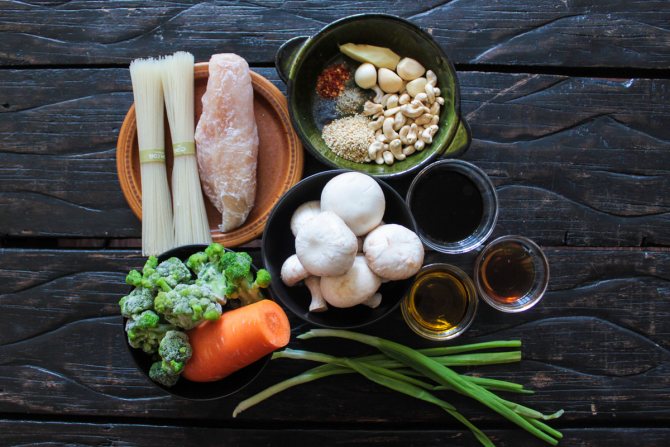
Preparation
- 1Cut the pre-frozen chicken into thin slices up to 1 cm thick.
- 2 Boil the rice noodles according to the instructions on the package.
- 3Chop the garlic and peeled ginger into small cubes and divide them into two piles.
- 4Thaw the broccoli and drain the liquid.
- 5 Peel the carrots and cut them into thin ribbons with a vegetable peeler.
- 6Wash the mushrooms and cut into 4 parts.
- 7Chop the green onions into small rings.
Preparation
- 1 Heat the wok, add two tablespoons of olive oil and one tablespoon of sesame oil. Add half the garlic and ginger to the wok, after 10-15 seconds add the chicken in one layer. After 30-60 seconds, turn over all the pieces and continue to fry them until cooked. Place the entire contents of the wok on a plate and return the wok to the heat.
- 2In a hot wok, add the remaining two tablespoons of olive oil and one of sesame oil. Add the second half of the garlic and ginger to the wok, followed by the mushrooms, broccoli and carrots. Cook the vegetables for five minutes, stirring constantly. We do not reduce the fire.
- 3 Return the chicken to the prepared vegetables, add soy sauce and boiled pasta. Mix everything thoroughly, cook for another minute and turn off the heat.
